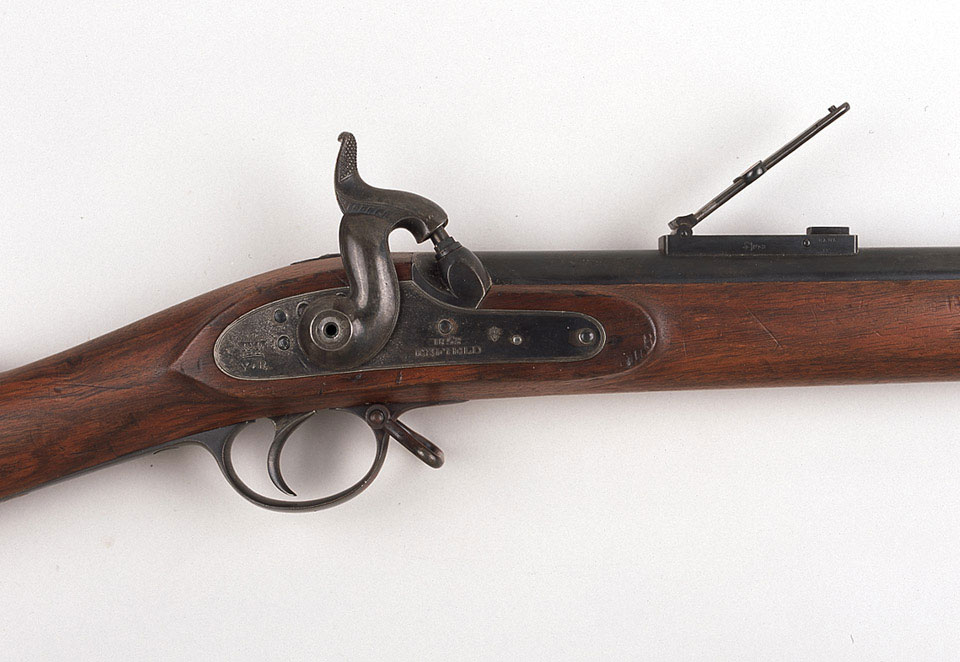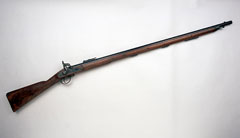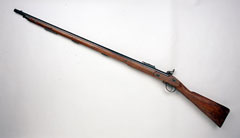
Online Collection
« Prev - 1 of 31 results - Next »
Reduced Bore, Experimental Minié 63 inch Percussion Rifle Musket, 1853
In 1852, a year after the introduction of the Pattern 1851 Minié Rifle Musket, extensive trials began to develop a new, lighter, firearm of smaller calibre for the infantry. The aim was to decrease the weight of the Minié bullet by reducing the size of the rifle bore. Two rifle muskets were initially produced, each modelled on the Minié with bores reduced from .702 inch. to .530 inch. When Lord Hardinge succeeded the Marquess of Anglesey as Master General of the Ordnance, the development became more competitive and five gunmakers (Wilkinson, Lancaster, Purdey, Greener and Westly Richards) were invited to produce firearms designed to fire a lighter bullet. The resulting trials eventually led to the adoption of the Pattern 1853 Enfield Rifle Musket.
This Minié has a reduced bore of .630 in. and a lock dated 1853, suggesting it is an experimental rifle musket from one of the trials. It was manufactured at the Royal Small Arms Factory, Enfield and the barrel is rifled with four grooves like the standard Minié. On closer inspection, the furniture is revealed to be made of iron rather than of brass (a cheaper metal) which was used for the Pattern 1851 Miniés. The sight has not been engraved and its condition, with bluing visible on the sight and barrel, remains as it would have been when it was manufactured, indicating that it is a prototype, which has never been fired.
NAM Accession Number
NAM. 1963-12-251-95
Copyright/Ownership
National Army Museum Copyright
Location
National Army Museum, Study Collection
Object URL
https://collection.nam.ac.uk/detail.php?acc=1963-12-251-95



